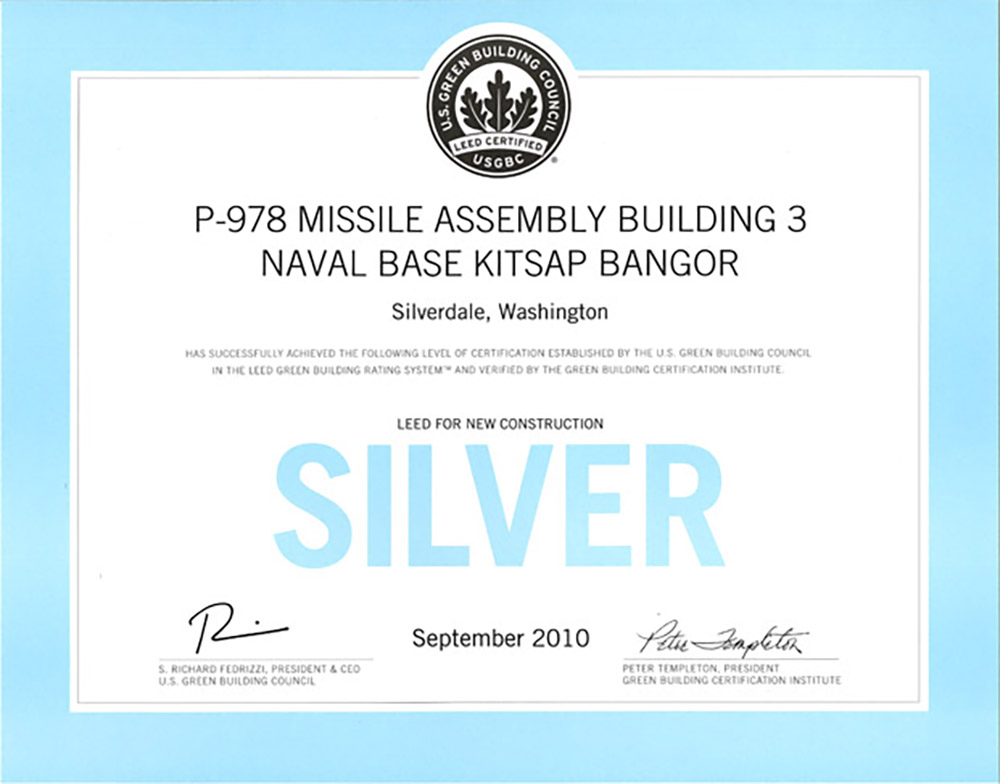Yikes! Me, a Site Civil Engineer. You know, the guy who designs the outside of the building suddenly wakes up in a cold sweat to find he is the one responsible for getting a project LEED certified. How did this happen?
Okay. I am exaggerating the situation, but it was a first for me, and I don’t think there are many engineers out there that have filled the role of a building project’s “LEED lead.” This role is typically held by the project architect, not the site civil engineer – and it’s not actually called the LEED lead. The LEED lead’s official name, according to the U.S. Green Building Council, is the Leadership in Energy and Environmental Design Project Team Administrator.
I landed this responsibility through Reid Middleton’s on-call contract (IDIQ) with the Navy. We often get awarded contracts for new buildings and remodel projects, regularly managing multi-discipline teams. This particular LEED certified project is a new 35,000-square-foot industrial building at Naval Base Kitsap (NBK), Bangor in Kitsap County, Washington.
While preparing the fee proposal, I had a continuing dialogue with the project architect Phil Lane of Schreiber Starling and Lane. Because Reid Middleton was the prime consultant, we decided Reid Middleton would also manage the LEED effort. Phil graciously let me take this on and promised to mentor me through the process. I thought, after all, I am a LEED Accredited Professional, and I’ve worked on the Sustainable Sites credits in the past. I was soon to find out that this experience, although helpful, did not fully prepare me for what was to come.
Some of the challenges I faced included getting owner and team members’ commitments to meeting LEED criteria during the design phase. I had to work diligently at convincing team members not to give up on credits and remind them how important the credits were to getting certified. Another complication came when the contractor’s LEED manager left the project and the company before substantial completion. Although I had met with him during construction and inspected his documentation, I was informed that his replacement was having problems locating the files. This was finally resolved.
The building was certified at the Silver level after two reviews and one appeal. This was an accomplishment for an industrial building with specific design criteria that restricted the designers’ creativity. Going through the complex LEED certification process was personally challenging and rewarding. Most importantly, I gained new insight into the difficulties architects contend with being the LEED lead and getting projects certified.


